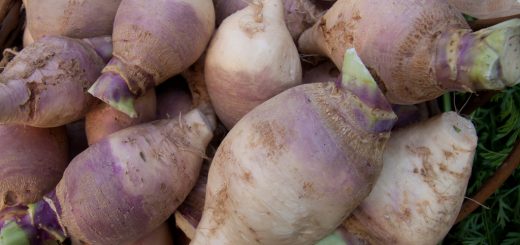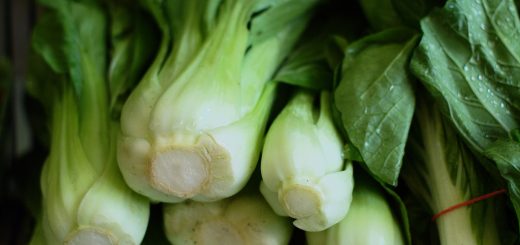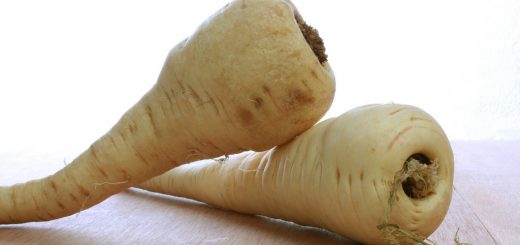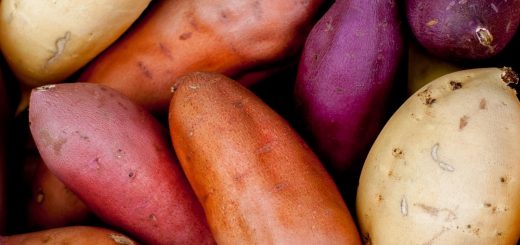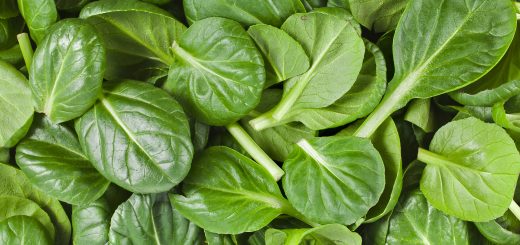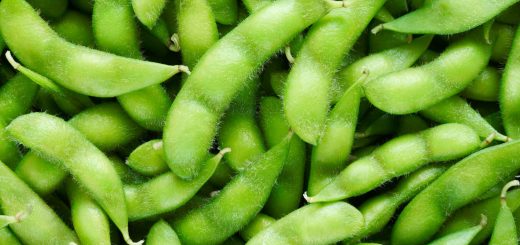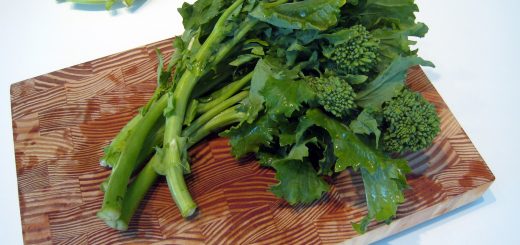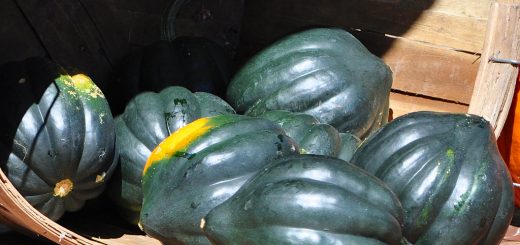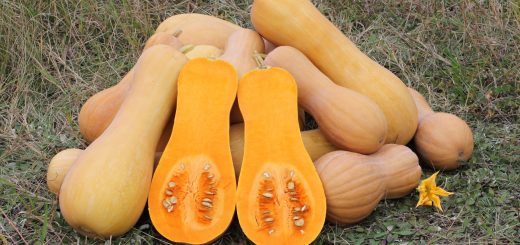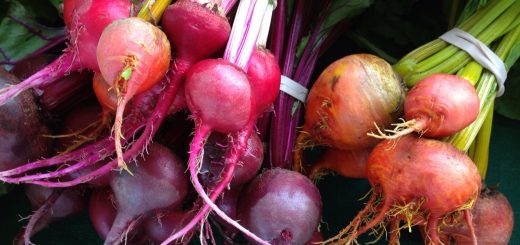Category: Featured Produce
Rutabagas are only called rutabagas in the U.S. Throughout the rest of the world, they’re known as swedes. This ordinary root vegetable is thought to have originated in Bohemia in the 17th century as a hybrid between the turnip and wild cabbage.
Members of the cabbage family, rutabagas are often confused with turnips, although there are noticeable differences. Rutabagas are larger, part white and part purple, with creamy orange flesh and ribs near the stem, and with a nutty, sweet flavor when roasted. Meanwhile, turnips are white with a purple-red top and a peppery taste. (more…)
Bok Choy is technically a Chinese cabbage. But until you cook with bok choy, you cannot appreciate how special it is. It has a mellow taste compared to some of the other asian greens such as tatsoi. (more…)
The parsnip is a root vegetable related to the carrot, but white or cream colored and sweeter. Up until the potato arrived from the New World, its place in dishes was occupied by the parsnip and other root vegetables such as the turnip. (more…)
Sweet potatoes are native to Central and South America and are one of the oldest vegetables known to man. They have been consumed since prehistoric times as evidenced by sweet potato relics dating back 10,000 years that have been discovered in Peruvian caves. (more…)
Calorie for calorie, leafy green vegetables like spinach provide more nutrients than any other food. Spinach is thought to have originated in ancient Persia. Spinach made its way to China in the 7th century when the king of Nepal sent it as a gift to this country. Spinach has a much more recent history in Europe than many other vegetables. It was only brought to that continent in the 11th century, when the Moors introduced it into Spain. In fact, for a while, spinach was known as “the Spanish vegetable” in England. (more…)
The Japanese name edamame literally means “twig bean”, and is a reference to the short stem attached to the pod. This term originally referred to young soybeans in general.
Over time, however, the prevalence of the salt-boiled preparation meant that the term edamame now often refers specifically to this dish. Typically, the pods are boiled in water together with condiments such as salt, and served whole. To eat, you simply squeeze the beans out of the pods with your fingers, or your teeth! (more…)
Commonly known in the United States as broccoli raab, it is truly a vegetable with many names around the world. A few of the many names are raab, rabe, rapa, rapine, rappi, rappone, turnip broccoli, taitcat, Italian or Chinese broccoli, broccoli rape, or broccoli de rabe. (more…)
Although considered a winter squash, acorn squash actually belongs to the same species as all “summer” squashes (such as zucchini and yellow squash). The most common variety is dark green in color, but newer varieties can be yellow, white, even variegated. As the name suggests, its shape resembles that of an acorn. It is a good candidate for winter storage, keeping several months in a cool dry location. Squash can be refrigerated, but it will deteriorate quickly and should only be refrigerated 1-2 weeks. (more…)
Butternut squash is a winter squash belonging to the Cucurbitaceae family of field pumpkins. It has a sweet, nutty taste similar to that of a pumpkin. It has tan-yellow skin and orange fleshy pulp with a compartment of seeds in the bottom. When ripe, it turns increasingly deep orange, and becomes sweeter and richer. (more…)
Beets are filled with good things. High in fiber, vitamins A and C, and surprisingly, more iron than most other vegetables, including spinach! They also contain calcium, potassium, phosphorous, and folic acid. The pigments that give beets their signature coloring are strong antioxidants. (more…)
